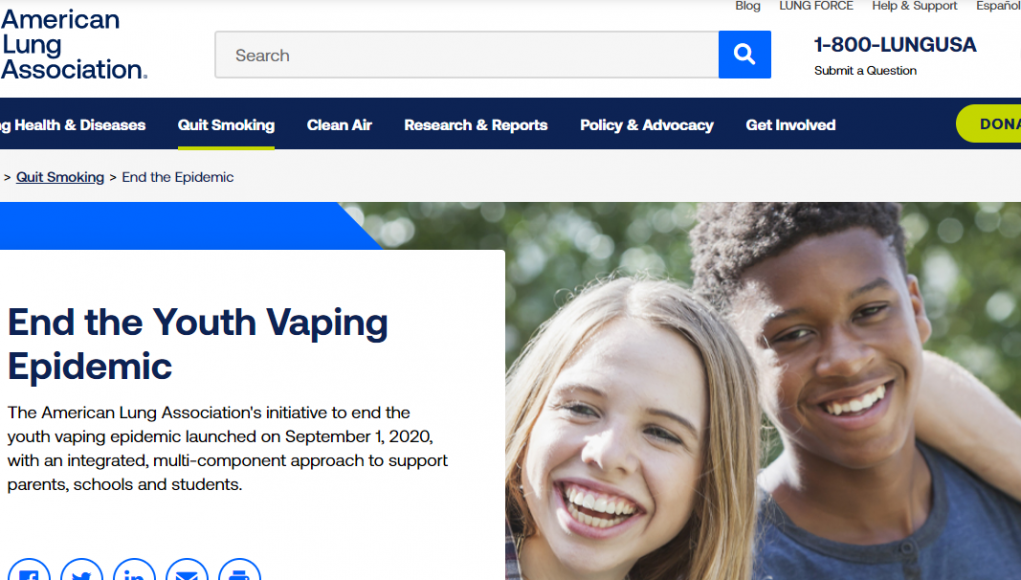To this effect, the ALA is collaborating with the Ad Council to promote resources that can best inform families about these dangers. “We use that to help parents understand the facts about e-cigarettes,” Brown continued, “and how to support conversations with their children before they start to vape.” She explained that the association is also launching a vape-free initiative for schools along with a research program looking into the effect of vaping on developing lungs.
Moreover, the initiative includes a plan for targeted advocacy at all government levels. “The Lung Association will implement a targeted advocacy plan to impact tobacco policies, including e-cigarette policies, at local, state and federal levels. The plan will urge the FDA to exercise robust regulatory authority over all tobacco products, including e-cigarettes and youth directed e-cigarette marketing,” reads the ALA website.
Sadly, the ALA has a reputation for maintaining an outdated and non-effective prohibitionist stance towards tobacco harm reduction, and has on multiple occasions shared misniformation and counter productive advice.
The ALA’s Outdated Stop-Smoking Campaign
A stop-smoking campaign launched by the association earlier this year, refuses to acknowledge the effectivity of electronic cigarettes as effective smoking cessation tools, and encourages smokers to stick to FDA approved quitting methods, which are know to have had little success.
The “Quit, Don’t Switch” campaign, blatantly ignores all the scientific data indicating that vaping devices and e-cigarettes are the most effective smoking cessation aides to date.
The ALA “believes everyone who uses tobacco products can quit using methods that are proven safe and effective by the FDA….” This despite the fact that research has clearly indicated that in comparison to e-cigarettes, these methods have had little success.
The smoking cessation tools deemed safe by the FDA include nicotine replacement therapy (NRT) products such as gums, patches and lozenges; prescription medications like Chantix; and counseling programs. However academic literature keeps indicating that due to the similar hand to mouth motion used for smoking, vaping is the most compelling cessation method to smokers, another reason why e-cigarettes produce the best results.
The ALA campaign contradicts itself
An article on Filter had rightly pointed out that the ALA campaign ignores the fact “that tobacco products exist on a continuum of risk,” and fails to recognize switching from smoking to vaping as quitting. “They state that ‘Switching to e-cigarettes does not mean quitting. Quitting means ending your addiction to nicotine….’ This is especially odd considering that the prevailing opinion of health organizations is that long-term use of nicotine replacement therapy—which supplies users with nicotine to ease withdrawal symptoms—is a safe means of quitting smoking.”
This is even more odd given the fact that the campaign itself is suggesting using nicotine products in order to quit (as long as these are FDA approved).
“In fact, nicotine replacement therapy works in a strikingly similar way to e-cigarettes: The person is still consuming nicotine—whether orally, in the cases of gum and lozenges; through the skin, in the case of patches; or by inhalation, in the case of e-cigarettes— only there is no combustion, no smoke and no tar,” points out the article.













